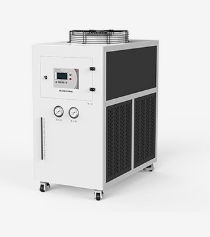- 07
- Oct
Why don’t industrial chillers use manual throttle valves? What’s so good about the thermal expansion valve?
Why don’t industrial chillers use manual throttle valves? What’s so good about the thermal expansion valve?
Manual throttle valve, in the current industrial chillers, there is no manual throttle valve application. The manual throttle valve literally requires manual operation. It can only be used in wet and dry evaporators. The enterprise must install a dedicated operator to adjust the manual flow according to the effect of evaporation. This is the operation method of the so-called manual throttle valve. Therefore, it is not suitable for modern chiller systems that require automatic circulation. Expansion valves are commonly used in modern industrial chillers.

It is mainly used in fluorine systems such as R12, R22 and R134a. It is the most suitable throttling device in the refrigeration system where Freon is used as a refrigerant. What does the thermal expansion valve mean? As the name implies, the thermal expansion valve controls the opening and closing of the expansion valve through heat. The temperature sensing part of the thermal expansion is installed after the evaporator, so that the temperature of the evaporated refrigerant gas discharged from the evaporator can be passed through, and then Decide what kind of opening and closing size the throttling device part should have.
In fact, thermal expansion valve is the most widely used type of expansion valve, and it is also a kind of expansion valve with good stability. Its use cost is also very low. However, thermal expansion valves are also divided into different types, including internal balance type. And other kinds, the scope of application is also different. For small and miniature chillers, using an internally balanced thermal expansion valve can meet the evaporation requirements of the evaporator and the entire chiller, and it can also save manufacturing. In addition to the production cost, the price and cost of the internally balanced thermal expansion valve are relatively low.
